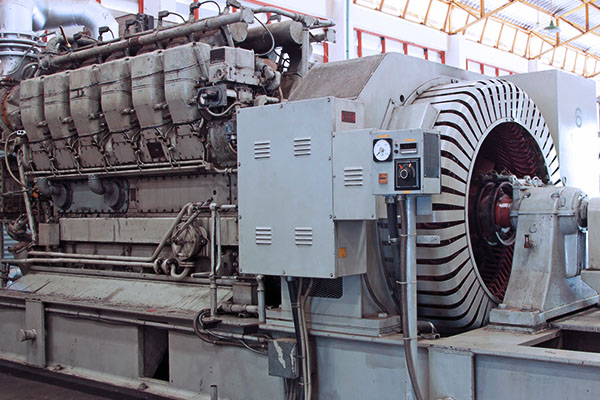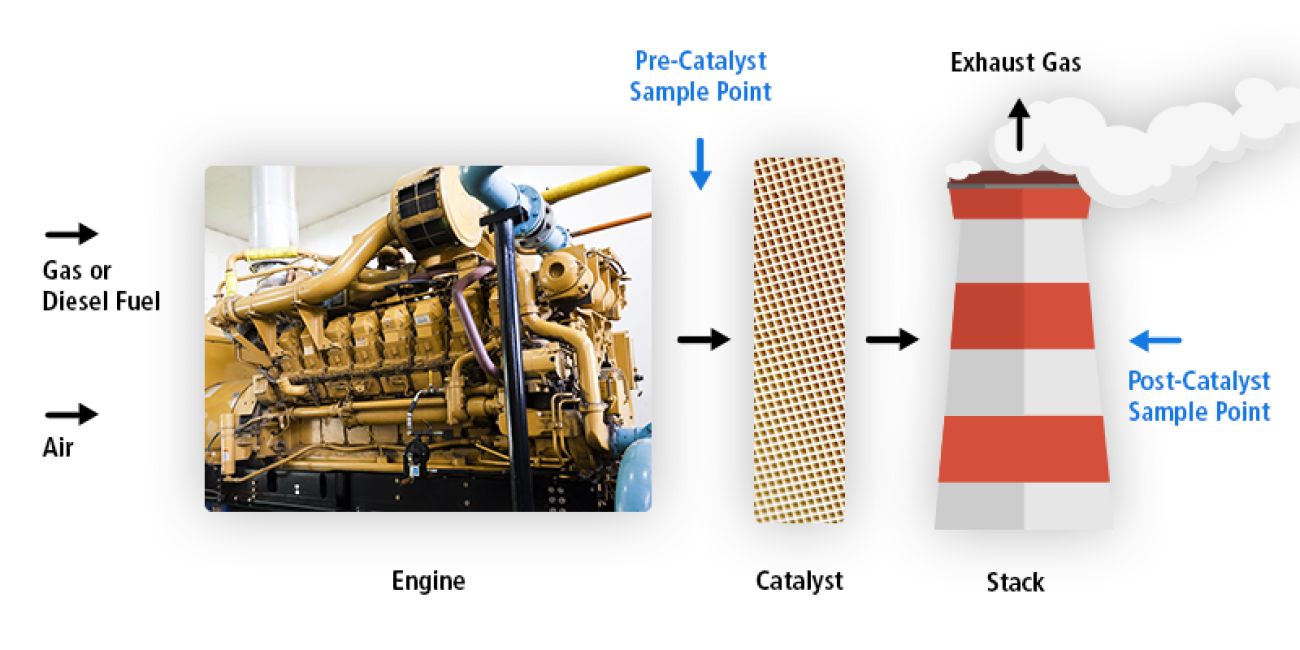Portable Emissions Analyzers for Gas & Diesel Engines

There are many types of stationary and mobile internal combustion engines that can run off gas or diesel fuels. Engines can be lean burning at a high air to fuel ratio (AFR) or rich burning at a low AFR. The exhaust stack gases from engines contain pollutant gases including CO, NO, NO2, NOx, and CxHy hydrocarbons as well as particulate matter. Measuring the engine exhaust emissions is important for engine tuning, performance optimization, safety, and proving emissions compliance to regulatory authorities.
Optimization & Safety
 Measuring the O2 and CO levels immediately after the exhaust gas leaves the engine and before the introduction of a catalyst, can provide an indication of how lean or rich the engine is burning and can be utilized for tuning of the engine for optimal combustion performance. Significant levels of CxHy combustible hydrocarbons, over and above the recommended values by the engine manufacturer, are an indication of unwanted and unburned fuel. Additional combustion adjustments or engine maintenance may be required to solve this potential safety hazard, especially for natural gas burning engines.
Measuring the O2 and CO levels immediately after the exhaust gas leaves the engine and before the introduction of a catalyst, can provide an indication of how lean or rich the engine is burning and can be utilized for tuning of the engine for optimal combustion performance. Significant levels of CxHy combustible hydrocarbons, over and above the recommended values by the engine manufacturer, are an indication of unwanted and unburned fuel. Additional combustion adjustments or engine maintenance may be required to solve this potential safety hazard, especially for natural gas burning engines.
The emissions of higher concentrations of CO, NOx, and hydrocarbons in the stack gas can be health and safety hazards and are, in most cases, regulated by the environmental agencies.
Emissions Measurements
Most engines utilize one or multiple technologies to reduce emissions, catalytic converters being the most prevalent at this time. Measuring the engine exhaust gas emissions pre-catalyst and post-catalyst shows the catalyst efficiency and can help determine when a catalyst is spent. Emissions analyzers with a high range CO (up to at least 50,000 ppm) are needed to measure gases pre-catalyst when the exhaust gas is untreated. An analyzer with a low range CO sensor (0 to 4000 ppm) is needed postcatalyst to measure the exhaust gases that have been chemically treated and emissions reduced by the catalytic converter authorities.
Emissions monitoring for compliance with local, state, and federal legislation is done in the exhaust stack post-catalyst. Those regulations normally require the measurement of pollutants including CO, Total NOx (NO+NO2), and CxHy hydrocarbons. Measurements of the O2 level of the post-catalyst exhaust gas are also required since most emissions reporting must be done for a given reference level of O2. The typical O2 reference level for engines is 11% to 15% (contact your local environmental authorities for the relevant O2 reference value in your area). Engine emissions are most often reported in units of parts per million (ppm) and grams per brake horsepower hour (g/bhp-hr). Emissions in ppm units can be converted to g/bhp-hr as a function of the thermal efficiency rating of the engine.

Instrumentation Solution
Si-CA 8500: True Emissions Analyzer with O2, low CO, high CO up to 15%, True NOx (NO+NO2), and CxHy hydrocarbons measurements for EPA level emissions monitoring.




Add new comment